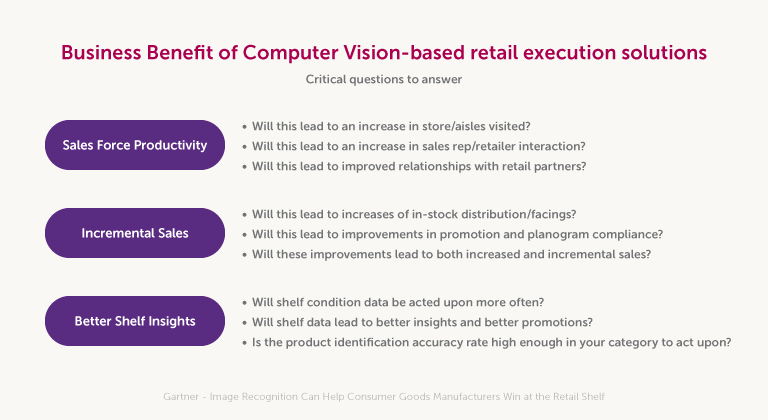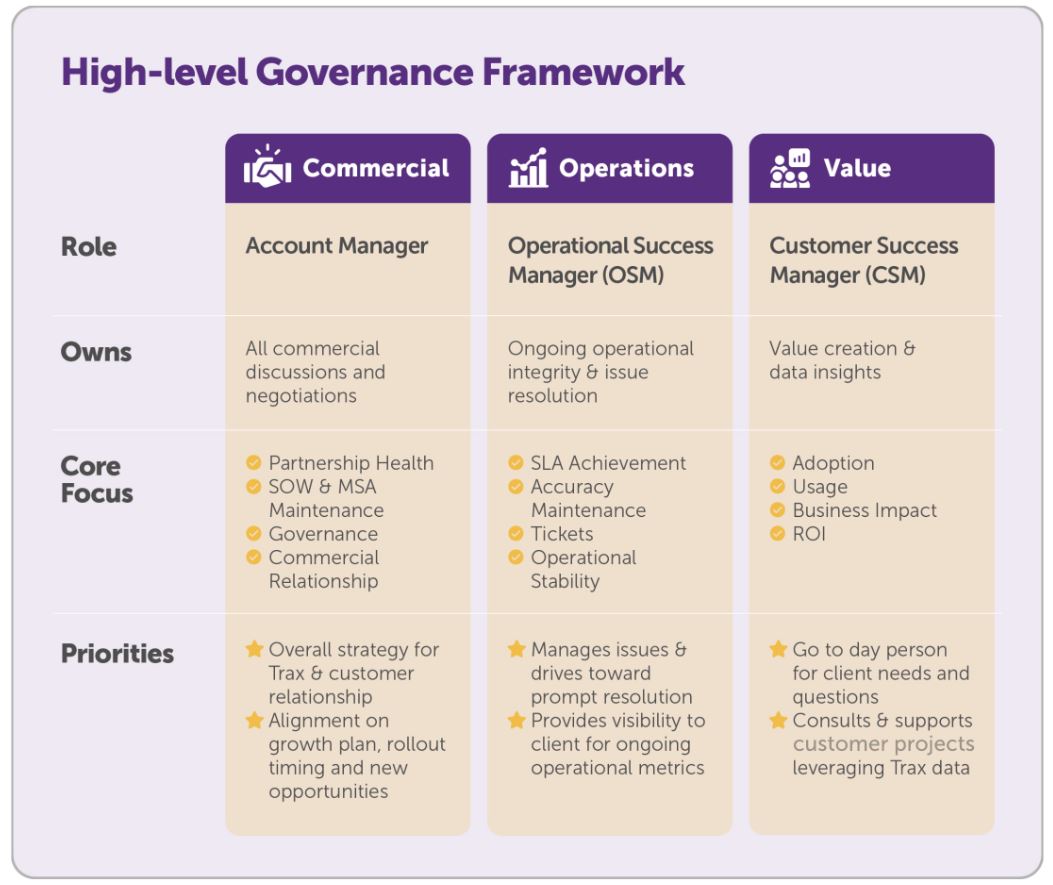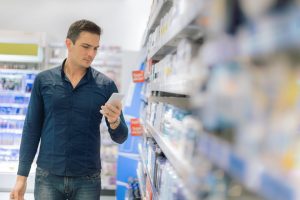4 tips to modernize your retail execution: Lessons from Diageo
Computer Vision (or image recognition) technology is now being used by many consumer goods manufacturers to both save sales representatives time in the store and get a more accurate and complete dataset of shelf conditions. For large manufacturers, adopting this technology and scaling it across markets can bring tremendous benefits – when done properly. Diageo’s journey towards retail-execution transformation contains some great lessons for aspiring brands to follow.
“Every day great execution” – Putting the power of digital automation into retail execution
To grow, brands must come readily to the shopper’s mind at the point of purchase, and products should be available at the right price and the right place. The pressure on manufacturers to rethink their retail execution practices is massive, and the time to evolve is now.
But the reality is that the industry is still plagued by a lack of visibility into the shelf, relying mainly on manual methods for retail shelf data and competitive intelligence. This data is often not complete and accurate, and is usually treated as qualitative instead of factual data, which significantly limits its value.
Diageo, one of the largest distillers that sells its products in 180 countries, was facing a similar challenge. But determined to ensure they have the right capabilities, tools and people to ensure excellence in their execution, Diageo turned to Computer Vision (CV)-based solutions. Instead of someone manually trying to interpret what’s happening on the shelf, now Diageo’s field force can snap a photo, upload the image and almost instantly turn it into insight – on out-of-stocks, facings, product location, price and more.
The technology, powered by Trax, and the resulting analytics are the mainstay of Diageo’s Every Day Great Execution (EDGE) program, which is aimed at ensuring executional excellence in their route to market. Here’s a quote from Diageo’s 2019 Annual Report:
Since we embedded EDGE in early 2019 [in the US], we’ve seen average volume in outlets that have adopted our recommendations grow three times faster than non-participating outlets. We are now expanding our use of EDGE to new markets.
How did the multinational giant achieve these results? And what lessons can you learn if you are evaluating CV-based retail execution technology or want to extend its adoption to multiple markets?
#1: Clearly define what outcomes to drive
Diageo recognized that the growing power of emerging technologies and advanced analytics can help them better understand customers and shoppers. The ability to identify more granular and actionable insights is critical, not just for a better portfolio strategy, but also for commercial execution. However, none of this was possible without their sales teams getting better visibility into stores and bars.
That’s exactly what Diageo set out to achieve with Trax Retail Execution. Diageo transformed its auditing procedures from handwritten notes and manual at-shelf measurements to digitally captured images that the Trax Cloud could analyze. In minutes, corrective actions were provided to the sales rep, and in less than 24 hours there were KPI-based ‘scorecards’ for managers to access in the office.

Computer Vision technology can increase sales-force productivity, improve shelf condition insights and help drive incremental sales, but deciding your top priority gives you a clear starting point from which to build a roadmap.
#2. Prepare a data management plan
Manufacturers with massive distribution networks typically struggle to get a uniform view of what’s happening at shelf across multiple markets. But by defining the right KPIs and developing a robust data management plan, decision-makers can objectively measure and compare gaps in performance and compliance in any retail store at any time.
One of the great benefits of digitizing the shelf is that store-condition variables, which were previously hard to measure, are now measurable. While it is important to start small with KPIs that matter most, don’t be afraid to aim for the sublime.
For example, Diageo can measure execution quality in off-trade and on-trade markets across a diverse range of KPIs, including beer-fountain recognition, menu-card recognition and share of shelf.
What’s more, their CEO can now see execution performance as one of six KPIs each morning on his executive dashboard. He can, for example, meaningfully compare Taiwan’s store network with Kenya’s, because the scorecards have been built in a standard way that gives the KPIs the proper weighting.
#3. Install a strong governance framework
Digitizing your store data collection, mobilizing sales teams with better tools and leveraging advanced analytics to tailor standards for every outlet may all seem like lofty goals. That’s why it’s critical to work with a vendor who precisely understands resourcing needs.
The right governance framework infuses the rigor needed in planning for a large-scale solution implementation, lays out clear roles and responsibilities and continuously monitors SLAs.
Between Trax and Diageo for example, a matrix team encompassing account management, customer success, commercial transformation and support exists to achieve the following goals:
- Drive the project vision: Create a clear vision and roadmap, deploy new features that the technology requires, create clear KPIs and drive value and insights from the data.
- Deliver the solution: Translate the vision into a solution, create a clear roadmap for execution, incorporate the new deployment of new features and ensure support processes are in place to make sure the tool is working.

#4. Leverage insights to improve both commercial and portfolio strategy
A top sales executive at Diageo in Europe says that before the partnership with Trax, they spent “a lot of time focusing on outlets that have great execution rather than those that don’t.” To lift its game, the company used Trax to find the areas that needed attention and identify exactly what those areas required.
Deirdre Mahlan, Diageo North America’s President says, “the tool allows us to go into the store and take in everything from the price point to the number of facings to where a product is on the shelf to assortments to display, which over time will help us when we talk to retailers about our brands. For instance, let’s say the store doesn’t have Crown Royal Regal Apple. We would be able to go in with predictive data to say that in stores like this adding this brand will increase sales by a certain amount.”
But the more telling impact of Diageo’s analytical approach in applying shelf analytics is on the more strategic aspects of their business.
Using Trax’s technology, Diageo can study category trends, consumer occasions and geographic differentiation as they apply to the portfolio. This push towards data-driven analytics has helped Diageo gain more market share in North America, where it reported growth of eight percent in the last financial year.
Ivan Menezes, Diageo CEO, shared the effect this focus on data-led insight and efficiency has had on the company as a whole in its 2019 annual report:
We delivered organic operating profit growth of nine percent, ahead of net sales growth. This was driven by improved price/mix and benefits from our focus on everyday efficiency.
Looking to win at the shelf? See how Trax can help you with a comprehensive real-time view of store and field performance across all retail channels.



